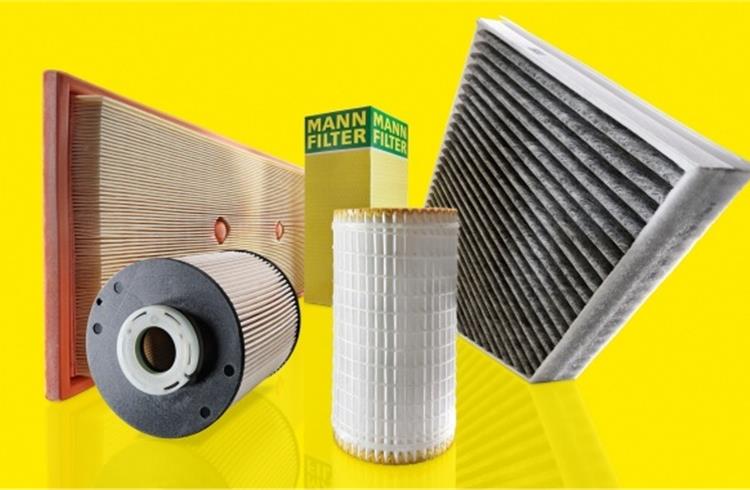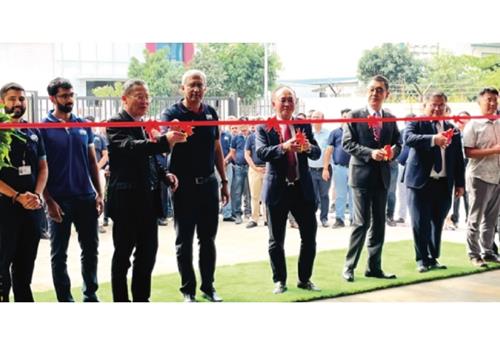Mann+Hummel Filter tests anti-bacterial cabin air filters
The German filter major is working on anti-bacterial and anti-allergic cabin air filters for shutting out bacteria and hazardous gases. We visit the R&D centre in Bangalore.
Recognising the need for giving a fillip to research and development activities in India, the Union Ministry of Science and Technology has been extending a helping hand to multinational firms keen on investing in an R&D setup in India.
Part waiver of customs duties ranging between 5-30 percent on import of equipment and infrastructure is facilitating global auto component players like Mann+Hummel Filter (MHFL) to step on the gas in terms of raising their R&D and engineering spends in India for furthering product development. Parallelly, the company is supporting its overseas operations with design, testing, simulation and validation expertise.

German filtration major MHFL has an R&D centre based in Bangalore where it is working with raw materials that are suited for the Indian market to design filtration products. Over 140 engineers and designers are currently employed here.
“Indian customers are sensitive to price and sometimes we need to look at alternate ideas to meet their expectancy without compromising on specifications. So we are working on it and undertaking benchmarking, learning what the competition is doing and how we can improve further by using our knowhow,” Pradeep S Randhawa, vice-president and managing director, told Autocar Professional on a recent visit to the company’s Bangalore
R&D centre.
Innovation and Expertise
At present most of MHFL's innovations revolve around the filter medium and element design. R&D teams are required to come up with at least 2-3 innovative ideas each year and are currently working on many of these. An earlier product innovation related to integrating a coolant duct into the air intake manifold, for one leading four-wheeler manufacturer, was driven by the push to make the component more affordable, better and more space saving by integrating multiple components into one assembly. This innovative process results in a cost saving of anywhere between 15-20 percent for the OEM.
For transiting to BS-VI emission norms which are set to be enforced in the year 2020, tweaks are likely to be made in the thermal management system and Randhawa says that the company is in discussions with OEMs and plans should freeze by end of the year as prototypes and validation processes will take time. On an average, MHFL spends Rs 20 crore annually on equipment, validation and R&D initiatives. Globally, Mann+Hummelinvests about 3-4 percent of its turnover on R&D annually.
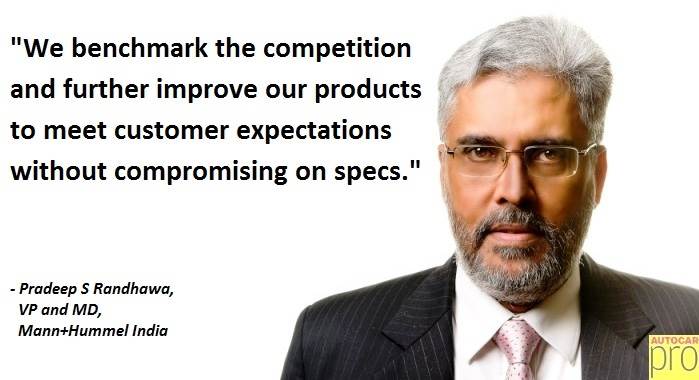
The Bangalore R&D centre has around five laboratories for material testing, product testing, component testing, durability testing and vibration testing including the climate chamber that simulates various climatic conditions for testing the product under extreme conditions.
The centre predominantly works on three product groups – air filters, liquid filtration involving fuel and oil filters as well as cabin air filters. Of the total manpower, 100 work in the automotive domain with 40 deployed in industrial filtration R&D. Cabin air filter testing is currently underway and should be completed by year end. For this, standard dust is passed through the filter to check the filter efficiency and dust holding capacity as well as differential air pressure on the clean and dust side – these are the three important factors that are checked.
Further, two broad types of tests are undertaken here – one that forms part of the development work while innovating a new product and building prototype samples. These are then tested and after manufacturing also undergo several quality checks. Tests are also undertaken mid-stream on products to ensure they are maintaining consistent quality levels that they started with.

A guided tour around the facility reveals that among the new product developments at the R&D centre is the anti-bacterial and anti-allergic cabin air filter for shutting out bacteria and hazardous gases. The cabin air filter will be supplied to a Tier I supplier for fitment in the HVAC system for a leading car manufacturer in India after the trials and tests are successfully completed.
In addition, development work on BS-VI emission norms has started on the three-stage water separation filter for fuel filtration as well as streamlining the air flow into the combustion chamber with the integration of the mass air flow sensor into the air cleaner for a truck manufacturer. Besides, the acoustic filter development is under the planning stage. It will lower the engine noise levels in the vehicle. Globally this technology is available with Mann+Hummel and will be brought to India based on the market demand and accordingly customised to suit the OEM's needs.
The R&D centre does not work on build-to-print requirements of clientele but designs in-house based on technical product specifications given by the OEM. “If a car manufacturer is coming up with a new car model that will use a new engine platform which requires a new filter, we take stock of their requirements and translate it into the design,” says Vishwas Gawade, engineering manager (Filter Elements).
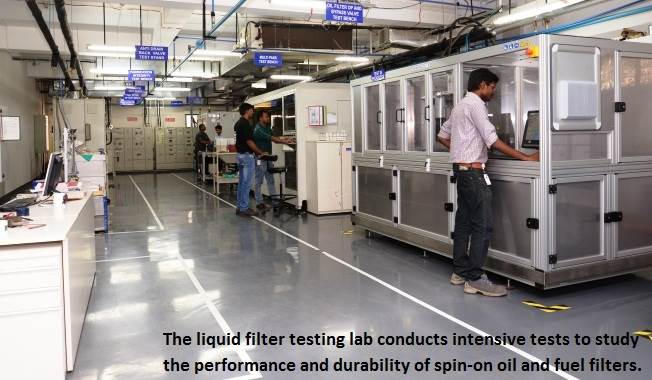
The centre works in close sync with the customer from the conceptual design stage with an intensive R&D involved in ensuring a consistent quality level.
For instance, the MarutiBaleno’s air cleaner system was designed completely in-house from scratch at this centre. The product is mounted on the engine and is manufactured at MHFL’s Bawal plant. The carmaker provided the packaging data from the engine side to the R&D team which drew up the design based on it.
The Baleno air cleaner boasts of an efficiency of over 97 percent in terms of filtration, preventing contaminants from passing through the filter. “We have a certain parameter for dust-holding capacity which is directly co-related with the service interval of a particular product and the carmaker increased that by 30 percent from its earlier requirements. So it was a technical challenge building the new product,” reveals Gawade.
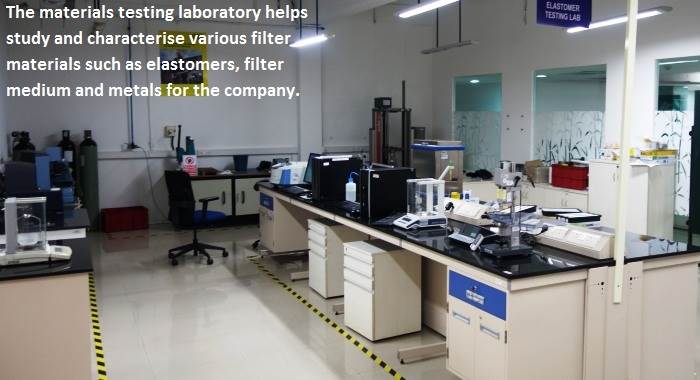
For the increased dust- holding capacity, existing materials were found to be inadequate; hence the team worked with the company’s raw material suppliers on how the fibres would play the role. This involved improvement of materials to facilitate more dust- holding capability as well as higher filtration efficiency to prevent smaller particles from passing through. With lower contamination, the engine’s durability and performance improves. Overall, the Baleno’s air cleaner system involved a two-year product development cycle.
For export models, often materials used in the filtration products have to be varied to withstand the climatic conditions of the destination markets. The basic design of the product remains the same but various aspects of the product could change. For instance, coatings to be used on the metal will be frozen based on the regulations followed in the destination country. Sealing materials may also differ for regions with lower temperatures necessitating use of fluorinated rubber that will withstand that climate.
Expanding clientele
The MHFL engineering team is now also developing various other filtration products for upcoming models from its customers. The R&D team says that increasingly the packaging space for the filter is shrinking and performance requirements for the filtration system are rising. Consequently, OEMs are demanding very high levels of filtration as well as long service intervals for the filters. If a filter earlier was changed after every 5,000km, now the changeover is being moved to every 10,000km or 15,000km.
Interestingly, to cut engine noise, MHFL is also introducing resonators in the air cleaner system and will be modifying existing designs of filtration systems for incorporating both emissions and noise applications for a couple of carmakers in the future.

While the complete engine has not been tested at the R&D centre for vibration and noise, the climate chamber along with the shaker test bed simulates a similar environment condition wherein temperatures vary from -20 to 180deg Centigrade for testing engine components to check how filter products function at certain vibrations and in different climes.
More investments are expected to flow in to the test facility next year on the three-stage water separation filtration system and mechatronics which is also expected to be introduced. Mechatronics technology involves particle gas separation with filters along with sensors and electronics and facilitates an understanding of the air quality in the cabin. Increasingly, the trend amongst OEMs to push their vehicle performance to the limit every year is also raising the bar for component makers in terms of their performance output.

“We start with materials in the raw form and start testing for pore size and micron size and what pore size should be developed from the material,” says Dr Rajesh Natarajan, senior manager (R&D Validation).
The team working on the material side uses the infra-red spectrum to check the material for its functionality and leverages differential scanning calorimetry to understand its usefulness in different applications, temperatures and geographies. For meeting requirements of biofuels for instance, various materials have to be sampled for higher durability as also for use of different coatings for withstanding corrosion in metal filters.

At present, the R&D centre has not worked on filtration systems for alternate fuel or CNG and LPG cars but is at the starting process as these applications are mostly centered around in India. Globally, there is more focus on biofuels especially in Latin America and Asia and the centre also addresses the global needs of the company.
On the fuel filter element side, the nozzle size of fuel injection systems is reducing in size with the need to step up the fuel efficiency of the car and to reduce contaminants that will put the fuel injection system at risk.
Meanwhile, testing is undertaken here on bulk product samples of about 30-50 over a two- to three-month period and these are brought from the Tumkur plant. The centre also supports other Mann+Hummel locations from India in terms of leak test and static burst pressure test among others.

Every material is tested before being applied in a product; product development is layered and goes through multiple tests and checks. Sophisticated test equipment procured from Germany and other locations is harnessed here to be at par with global levels.
A lot of work happens in product testing and validation for global markets. “When they are developing their products they send them here for testing, validation and analysis,” concludes Natarajan as we head out of the R&D centre.
Recommended: Mann+Hummel Filter bets big on its India growth
Photography: Omkar Dhas
RELATED ARTICLES
BRANDED CONTENT: Serving India’s EV ecosystem
Shimnit Integrated Solutions Pvt. Ltd. (SISPL), a subsidiary of Mumbai's leading high-security number plate supplier, Sh...
Driving EV business with agility and flexibility
CEOs from the EV startup ecosystem met in Bengaluru and Pune to discuss the challenges and business opportunities.
BRANDED CONTENT: SM Auto and Gotech energy inaugurate their first battery pack assembly plant in Pune
Pune-based SM Auto Engineering (SMA), a leading automotive component system manufacturer and its partner Gotech Energy (...





 By Shobha Mathur
By Shobha Mathur
 21 Aug 2016
21 Aug 2016
 16841 Views
16841 Views



